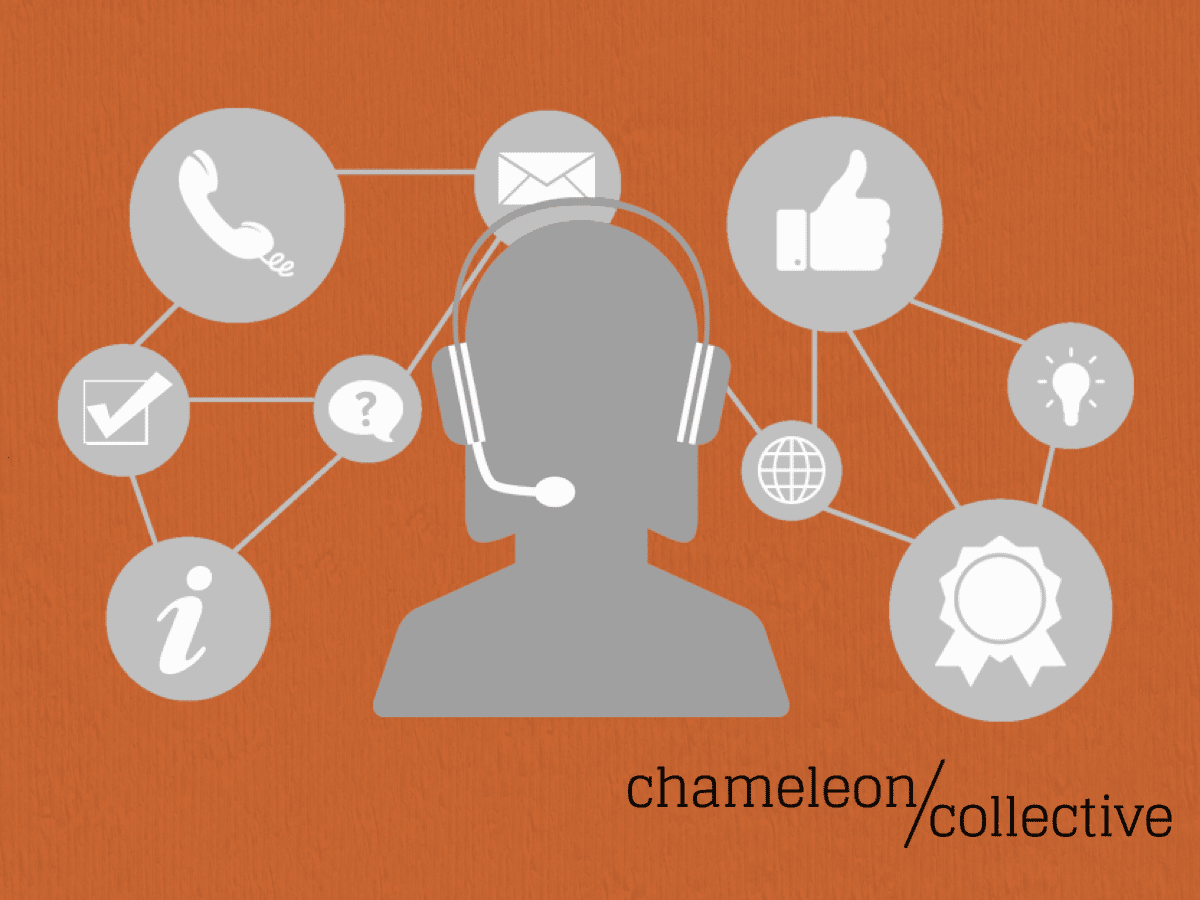I’ve been in the e-commerce trenches since 1998, since the original dot.bomb days. I cut my teeth in the B2C acquisition, tweaking and optimizing the funnel, and have had my fair share in creating retention strategies for several clients. The biggest missed opportunity I have seen with nearly every client is: they don’t listen to their customers. If they are listening, they fail to leverage that feedback into actionable insights to improve the customer’s journey. Then they scratch their heads and wonder why their churn rate is trending higher MoM (Month-over-Month). Well, it may have something to do with your customer experience strategy.
You’ve probably read this elsewhere on the Interwebs that 80% of a company’s future revenue will be driven by 20% of their existing customers, and according to Bain & Co, a 5% increase in customer retention can increase a company’s profitability by 75%. Customer acquisition is expensive, so once you’ve obtained that customer you should do everything in your power to retain them — you need to ‘delight’ and ‘wow’ your customers along every step of their journey so they’ll keep coming back for more.
So, how do you do that?
 Improve Your Customer Experience Strategy
Improve Your Customer Experience Strategy
Well, there are a few ways to develop your customer experience strategy for retention. There are three keys to providing an amazing customer experience. You need to listen to your customer, identify their pain points and improve their experience along every touchpoint. This ultimately leads to higher AOV and a greater LTV — in other words: a happy customer will spend more and generate larger transactions over time and they will refer more people and bring in more business because of the great experience they have with your brand.
1. Know Your Customer
The first step is to map out your customer’s journey and maybe even create a customer persona. That’s assuming you haven’t done so already. A customer journey map is an excellent tool for visualizing a typical customer’s experience. It’s an exercise worth the effort and it will enable you to identify each touchpoint in the customer’s experience with your brand. This is vital to a customer-centric strategy. Use this map to guide design, development, user experience, how best to speak to your customer’s needs and how to market to them. This way you’ll have a better idea of where to place vital feedback checkpoints.
2. Listen to Your Customer
Once you’ve identified key touchpoints along your customer’s journey, put in place the necessary listening posts to gather their feedback and sentiment. Be receptive to understanding their pain points — smooth out these issues and you will improve their experience. Track your customers from their very first click, all the way through conversion and beyond. Here are some recommended opportunities for listening in.
- First Touch Survey – The moment you capture their email address, take the time to get to know more about them. Sure, you can track their web behavior with any number of pixels and event triggers, that’s valuable data. However, you’re missing a great opportunity to ask them a few questions beyond just their name and birthday. It can be a quick, pop-up survey on the site or even a follow-up survey. Offer them a fun quiz to discover their tastes, have them compare various styles or colors, ask them directly what they are looking for or why they stopped by in the first place. Be specific in the data you collect. This is so you can best leverage that information to personalize their experience from the very start.
- Abandon Cart Survey – Something distracted your customer (or potential customer) from making a purchase or made them change their mind. In addition to sending out that abandon cart email reminding them of what they left behind, find out why they didn’t complete their purchase with a quick, open-ended question: What made you change your mind?
- Net Promoter Score® (NPS) – There is so much to learn from this simple question: “How likely are you to recommend ‘Acme Brand Services’ to a friend or colleague?” Once your customer has completed their purchase or has closed a deal, send off an email inviting them to rate your service on a scale from 0-10. Customers who give a rating of 9-10 are your Promoters. These are your brand champions who may be willing to sing your praises to others. Capitalize on their great experience, ask them to tell a friend and/or share their story on social media.
A score between 0-6 are your Detractors and should be followed up with a call from Customer Service immediately. Here’s your opportunity to gain valuable insight into what has spoiled this customer’s experience. It could be a simple misunderstanding that is easily cleared up or something that could impact the experience of others.
Also, pair your NPS survey with this one open-ended question: “What is one thing we can improve?” You may be surprised by their answers.
- Product Reviews – Once your customer has received their purchase, send out an email and ask them to rate the product and/or your service. This could be in addition to the NPS, or in place thereof. There are a host of services available that will help you gather customer reviews and enable you to promote those ratings on your product pages, use them as social proof within marketing materials (emails, display ads, Facebook posts, etc.) as well as improve your SEM placement with Google Seller Ratings and Product Listing Ads.
- Unsubscribe/Churn Surveys – MailChimp has the right angle after someone unsubscribes — they ask them why. Multiple-choice questioning is fine, but feel free to delve a bit deeper with an open-ended question when your subscriber is ducking out. You may also use this chance to offer the option to “opt-down” instead of opting-out. Maybe they are receiving too many emails from you, but still, want to hear about the occasional offer. Maybe they don’t want any marketing messages from you but really enjoy reading your blog posts. You won’t know unless you ask.
Once a customer has churned, reach out with a follow-up survey and find out why they left and what you could have done better. It couldn’t hurt. Keep those lines of communication open.
One final note on open-ended questions: Do Not Fear Open-Ended Questions.
Most marketers cringe when they think of all the replies they will have to sift through, but your response rate will be greater than predetermined, multiple-choice answers, and you’ll define a clearer understanding of what is truly at the root of your customer’s discontent. That’s powerful, actionable insight.
3. Leverage Your Feedback
You’ve taken great pains to gather valuable customer feedback, now use it. Transform that data into actionable insights. You’ll have plenty to keep track of so you can create a cost/benefit task list and document each complaint. Determine which department will be responsible for each task and assign a High-Medium-Low value for both “Benefit to the Customer” & “Cost to Implement”. Start with your high-benefit, low-cost items, naturally. Maintain this backlog and discuss it on a frequent basis with the team, put a plan into place, invest some time and money, make some changes to the customer’s experience, then move on to the next item. Publish your changes, then start the cycle over again and gather more feedback. Your aim to is to be always improving the customer experience strategy. Don’t rest on your laurels.
Speaking of gathering more feedback…
4. Follow Up
It’s a nice touch to reach out to former customers who left because of a bad experience, thank them for their feedback and share the changes you’ve put into place. This shows a commitment on your part that will speak volumes to a dissatisfied customer. It means you listened to them and were empathetic to their pain. By taking action towards improvement you may just win them back, and you’ve improved the experience for your other customers. Good for you.
5. Invest in CRM
Tracking a customer’s behavior, feedback, communications with customer care, email/SMS engagement (or lack thereof), transactions and personal preferences can be overwhelming, but not if you have the right people, process and tools in place. Customer Relation Management is not just a tool or platform, it is a customer-centric business philosophy. A CDP (Customer Data Platform) is only valuable and useful if you have a process for gathering the right data, as well as the right people in place to utilize that tool, and a strategy that ties it all together. Pick a platform that provides you with a Unified Customer Profile so that you can focus in on a single customer, the emails she has opened recently, which products she may have just purchased or returned, and any calls that she has had with your customer care team.
I could go on and on about the value of CRM, but that’s a subject for another article.
Managing Your Customer Experience Strategy
The overall goal is to wow your customer. Be proactive in your approach to meeting their needs and exceeding their expectations, and they will reward you with their loyalty. So remember to listen to your customers, identify their pain points and improve the experience so you can leverage those insights to develop your customer experience strategy.




